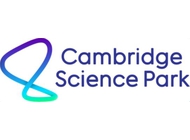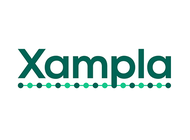Cable TV without the cable, at CES
- Date 6 Jan 2010
Cambridge Consultants is using its booth at the Consumer Electronics Show (CES) in Las Vegas, 7-10 January to demonstrate how a novel whitespace radio application can enable television streaming through the home. Its demonstration shows how InCognito™, the company’s proprietary ‘spectral sensing’ cognitive radio technology, can quickly identify spare channels in the TV band, allowing this bandwidth to be used for applications such as video distribution around the home.
Digital video recorders like Tivo and video on demand services such as Hulu have been growing in popularity in recent years as consumers increasingly enjoy the ability to design their own TV viewing schedules. However, it is very difficult to access that content throughout the home as the set top box is normally only linked to the main television in the house. Existing solutions involve extensive rewiring in order to connect every screen in the house to the set top box.
Emerging wireless products stream content over the unlicensed bands at 2.4 and 5GHz, using advanced MIMO radios to extend range and wall penetration. The additional spectrum provided by whitespace radio increases the total video streaming capacity of unlicensed spectrum considerably. Whitespace frequencies (around 600MHz) have far greater natural range and penetration, and as such can provide much needed spectrum diversity for these devices. Using a combination of 2.4, 5GHz and 600MHz will enable the best performance for hi-def video streamers, whatever the conditions.
InCognito offers a key building block for companies wishing to exploit the newly available spectrum. Unlike the 2.4 and 5GHz bands, the whitespace frequencies already have incumbent users, notably wireless microphones and TV broadcasters. InCognito uses cognitive ‘spectral sensing’ radio technology to accurately detect and avoid incumbent broadcasts. It has also been developed to allow for the evaluation of all potential aspects of typical radio product performance, including the development of suitable adaptive power control algorithms to eliminate possible interference to incumbent users and minimise interference to other whitespace radios.
“Video streaming in the home is just one application that will benefit from the increased range and wall penetration capabilities of whitespace radios using the TV band,” commented Luke D’Arcy, head of cognitive radio technology at Cambridge Consultants. “Demand for wireless bandwidth is growing exponentially, so it makes sense to make the best possible use of the radio spectrum. Cognitive radio techniques, such as those mandated by the FCC for whitespace radio, maximise available bandwidth for all users, and look set to play a large role in future spectrum planning. Cambridge Consultants can help device manufacturers to gain access to this new, free spectrum without interfering with existing users, such as TV broadcasters and wireless microphones.”
– Ends –
Notes for editors
Cambridge Consultants develops breakthrough products, creates and licenses intellectual property, and provides business consultancy in technology critical issues for clients worldwide. For 50 years, the company has been helping its clients turn business opportunities into commercial successes, whether they are launching first-to-market products, entering new markets or expanding existing markets through the introduction of new technologies. With a team of over 300 engineers, designers, scientists and consultants, in offices in Cambridge (UK) and Boston (USA), Cambridge Consultants offers solutions across a diverse range of industries including medical technology, industrial and consumer products, transport, energy, cleantech and wireless communications.
For further information, please contact:



